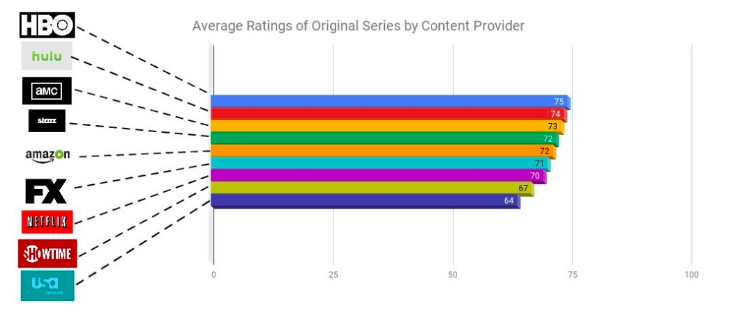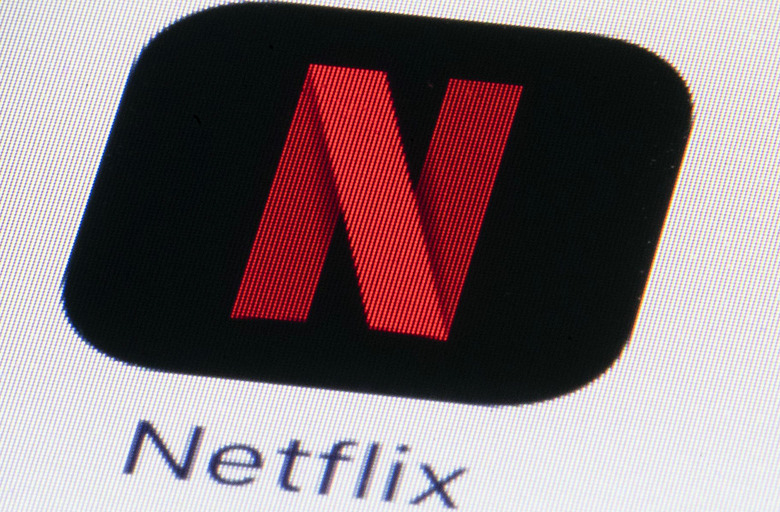Netflix Is Trailing HBO, Hulu And Amazon When It Comes To Quality Content, One Analysis Shows
Netflix by the end of this year will have spent an insane amount of money on content — some $13 billion, according to an Indiewire report last month.
With that pile of cash, more than any major Hollywood studio is shelling out this year, Netflix will produce or acquire hundreds of shows. Which is continuing a subtle shift of emphasis within the streaming giant's content library that used to be a kind of digital version of the old brick-and-mortar video store. But thanks to license agreements that come and go, Netflix can't always have every popular thing you want, and so it's been pedal to the metal building out a library of exclusive product and original shows that you can't get elsewhere.
All of that money being spent on all that original content makes a Netflix user like me — well, it is more often than not these days leading to paralysis by analysis. Tons of stuff to choose from. Not a lot of context for some of it, so you dive in and get a taste. The sort of streaming video version of the kitchen sink approach. Sometimes it works. A lot of times it doesn't. You don't have to be a studio executive or have any experience in the field to know there's no button to press that will scale quality content on a dime. Which leads to the subject of this post — a new analysis of review aggregation sites Metacritic and Rotten Tomatoes that shows Netflix and its chase for scale and the long tail of niche content may be having some negative consequences.
The folks over at Streaming Observer crunched the numbers to figure out which streaming outlets had the best original content, in a study that is as analytical as you can be when you're dealing with something as subjective as movie and TV reviews.
"To determine who makes the best original programming, we've taken data from loyal critic sites Metacritic and Rotten Tomatoes," the site explains. "Metacritic tends to be more critical, while Rotten Tomatoes is a little bit more favorable. Both ratings are on a 1-100 scale.
"Metacritic breaks down its ratings for shows by season, so we averaged all seasons for an overall score. We then took the average scores for all shows by a particular channel or service to get its overall score. If a rating wasn't available from one of the sites, we took the rating or average rating from just one of the available sites."
Here's what that study turned up:

Streamingobserver.com
Netflix, as you can see, is way down the list, in spite of the relative low comparable spend on original content from some of its rivals. Hulu, for example, is reportedly only spending $2.5 billion this year.
One thing that's surprising is that Amazon is ahead of Netflix, Amazon having shifted its strategy recently to go after more Game of Thrones-like big-budget fare that breaks through the noise and turns into a cultural force. Whereas Amazon's efforts up till now have been things that especially excite critics, like Transparent and Mozart in the Jungle.
"The results speak for themselves," Streaming Observer says about its analysis. "Netflix is toward the rear of the pack when it comes to pure quality of its original series, seemingly suffering from its focus on churning out as many shows as it can."
There's a reason, though, that Netflix produced a historic upset a few months ago, when it bested HBO for the first time in terms of the most Emmy nominations. One takeaway is that the old rules doesn't necessarily apply anymore. The ground is shifting, and this will be a fascinating shakeout to keep watching. Because of course the winner in all this is us, with lots of great shows and films to stream.
